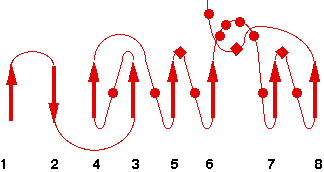6XT8
Name : Crystal structure of haloalkane dehalogenase variant DhaA115 (synthetic construct) domain-swapped dimer type-2 (combined mutations of DhaA101 DhaA112 E20S\/F80R\/C128F\/T148L\/A155P\/A172I\/C176F\/D198W\/V219W\/C262L\/D266F)
Revelation date : 27-Jan-2021
Family : Haloalkane_dehalogenase-HLD2
Gene_locus : rhoso-halo1
PDB file : ESTHER: header of PDB entry RCSB: Full entry
Comment
Markova, K., Damborsky, J., Marek, M.
Ligand :
References (1)
| Title : Computational Enzyme Stabilization Can Affect Folding Energy Landscapes and Lead to Catalytically Enhanced Domain-Swapped Dimers - Markova_2021_ACS.Catal_11_12864 |
| Author(s) : Markova K , Kunka A , Chmelova K , Havlasek M , Babkova P , Marques SM , Vasina M , Planas-Iglesias J , Chaloupkova R , Bednar D , Prokop Z , Damborsky J , Marek M |
| Ref : ACS Catal , 11 :12864 , 2021 |
| Abstract : Markova_2021_ACS.Catal_11_12864 |
| ESTHER : Markova_2021_ACS.Catal_11_12864 |
| PubMedSearch : Markova_2021_ACS.Catal_11_12864 |
| PubMedID: |
| Gene_locus related to this paper: rhoso-halo1 |
Representative scheme of Prolylcarboxypeptidase structure and an image from PDBsum server

